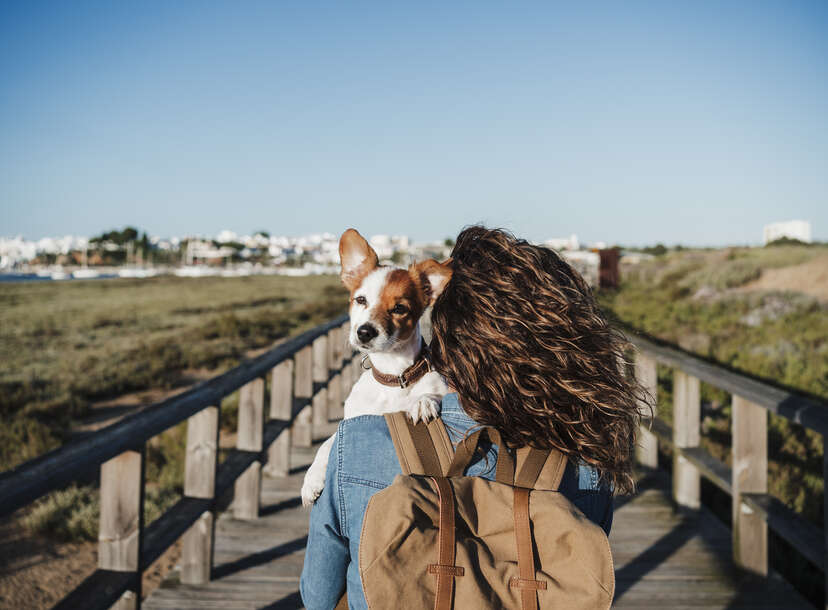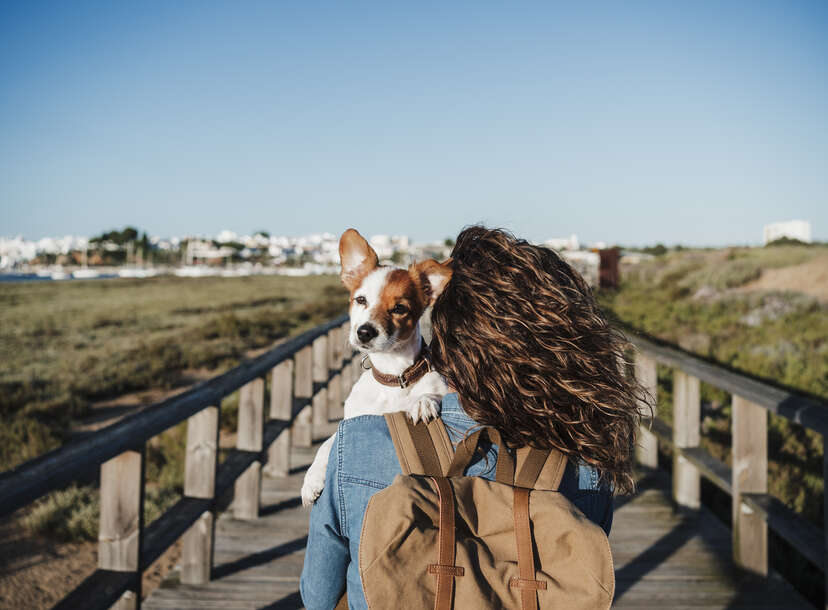
[ad_1]
Follow these tips to navigate everything from legal parameters to potential challenges.

Finding love in Mexico is easy. They might be at your feet, munching on carne asada that slipped off a taco.
“They really pick on you here,” Macky Arbaugh says of Mexican stray dogs. She is the adoption coordinator and social media manager for Cerritos Beach Dogs, a non-profit cafe and dog rescue organization in Baja, California Sur. The rescue operation was founded in 2023 by a group of Mexicans and expatriates from the United States, Argentina, Canada, and Australia. Pick up orphaned puppies from Cerritos Beach and send them back home with travelers.
“Most of our fosters are foreigners or tourists, and I think it’s because most people here already have their own dogs,” Arbaugh said. Just one look into a cute puppy’s eyes is enough for a traveler to start planning how to get the pup across the border.
Beyond Mexico, destinations in Latin America, Asia, Africa and Eastern Europe have long struggled to control stray dog and cat populations. “There are hundreds of thousands of wonderful puppies in rescue around the world, waiting to find fur homes,” Arbaugh said.
But of course, importing animals into the United States requires some planning. The CDC lists more than a dozen diseases that can be carried by dogs alone, but this creates complications when bringing animals into the country, from vaccination requirements to airline age restrictions to veterinary certification. This means that there are many procedures.
Have you fallen in love with a puppy from International Dog Rescue? Or are you preparing to keep your eyes (and heart) open to your furry friends the next time you go abroad? Everything you need to know about owning a pet overseas, including health inspections and transport precautions.
Adopt stray dogs and shelter pets
In some locations, there are so many stray cats and dogs that you may want to pull them right off a busy sidewalk instead of adopting them through a shelter or shelter. Tourists often don’t even consider adopting until they come across an animal in poor condition that needs help. However, Humane Society International says, “Concerned individuals should keep in mind that these animals may have actual caregivers.” They recommend contacting your local animal shelter or veterinarian to assess the animal’s condition and see if they can trace the owner.
Shelters often pay for spaying/neutering, and some make sure the animals are up to date on all vaccinations, so be sure to check with your local community before adding feral cats to your herd. It is important to utilize resources. Humane Society International recommends finding a rescue near you using worldanimal.net, a database of thousands of animal rescue organizations in 170 countries.
Entering the United States with Animals
There are some animals that are not allowed to be brought into the state from overseas. The USDA defines pets as dogs, cats, ferrets, rabbits, rodents, hedgehogs, reptiles, amphibians, and certain birds. Animals that do not fit into these categories are not legally pets and may not be allowed entry. Also, birds such as ducks and pigeons are counted as poultry rather than pets, but as far as dogs and cats are concerned, they are fine as long as they are at least 8 weeks old (required by most airlines and the US) . Department of Agriculture).
However, the U.S. State Department is strict about dogs imported from countries with a high risk of rabies infection. These countries include Brazil, India, Thailand, Morocco, and over 100 other countries. If your dog comes from one of the countries on the CDC’s list, you must show proof that it has been vaccinated against rabies. Due to concerns about forged documents, he will only accept one vaccination certificate issued by the CDC.
Most states have no quarantine requirements for dogs and cats coming from overseas, but Hawaii and Guam have quarantine requirements due to rabies concerns.
Obtaining a health certificate
The CDC does not require a health certificate for pet imports, but airlines likely will. According to the U.S. Department of State, regardless of a country’s requirements, airlines typically request a health certificate for your pet within the past 10 days. Similarly, pets are always subject to border inspections, so do not attempt to import animals without this documentation.
Each airline has its own requirements, but most airlines will accept your pet’s breed, weight, age, and veterinary examination to ensure that it is healthy for travel and free of potential illnesses. We would like to confirm that there is no such thing. Put others at risk. Shelters and rescue agencies often provide this certification or help you obtain one. Cerritos Beach Dogs ships all puppies with vaccination cards and health certificates obtained from a local veterinarian within a few days of travel, Arbaugh said.
Arbaugh said the biggest hurdle when adopting a dog overseas is usually transportation. Being able to drive may protect your already stressed pet from further anxiety on a plane. Brachycephalic breeds such as pugs, Shih Tzus, and bulldogs, as well as Persian and Himalayan cats who have difficulty breathing due to stress, may be safer transported by car, as are older animals.
Some airlines require pets to fly in the cargo hold, which can be noisy, noisy, and overall distressing. And while flying with your pet typically costs more than $100 each way, you can get to your destination faster, which can be less stressful for your pet. The best transportation option for your pet will depend on your pet’s health and behavior. Consult your veterinarian or adoption agency to make an informed decision.
No matter where your new pet comes from, you should always consult your veterinarian first upon arriving at your home. This allows you to establish care, keep your animal up to date on medications and required vaccines, and ensure there are no potential health issues of concern. You may also consider microchipping your pet as a safety measure in case your pet gets lost. You probably don’t have the luxury of taking time during your homecoming to prepare for the big transition of your new pet. However, if you can think a little ahead, set aside a private area of your home where your pet can spend some quiet time when she feels anxious or overwhelmed. Be patient with your new pet as it adjusts to its new environment and lifestyle.
Consider other ways to help animals overseas
While adopting overseas may be appealing, Humane Society International recommends that people adopt in their home country before adopting overseas. The ASPCA estimates that approximately 1 million dogs and cats are euthanized each year in the United States to free up space in shelters. If you feel compelled to contribute to animal welfare while traveling, consider that adoption may not be the best way to help. Shipping animals overseas can be expensive, and those funds could be better spent providing spay/neuter services and other important services for multiple pets. there is. It may be best to donate money to your local animal shelter or ask them what kind of help they need.
Want more thrills? Follow us Instagram, tick tock, twitter, Facebook, pinterestand YouTube.
[ad_2]
Source link







